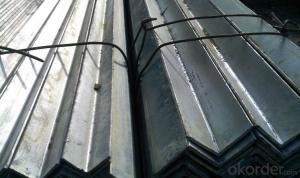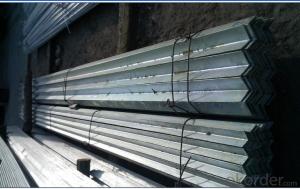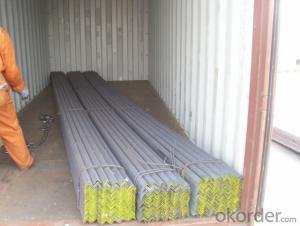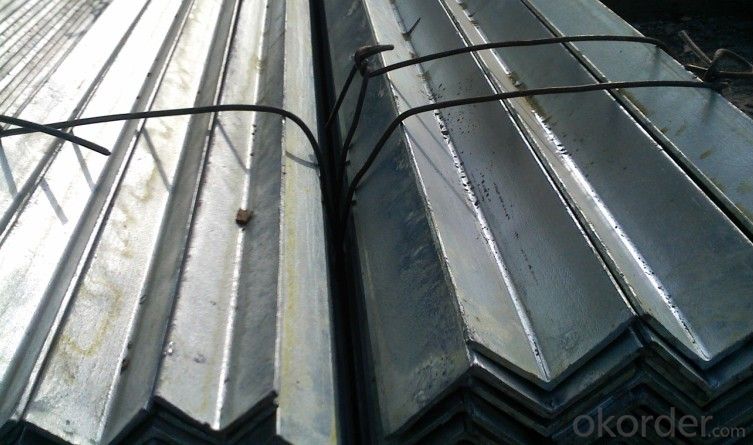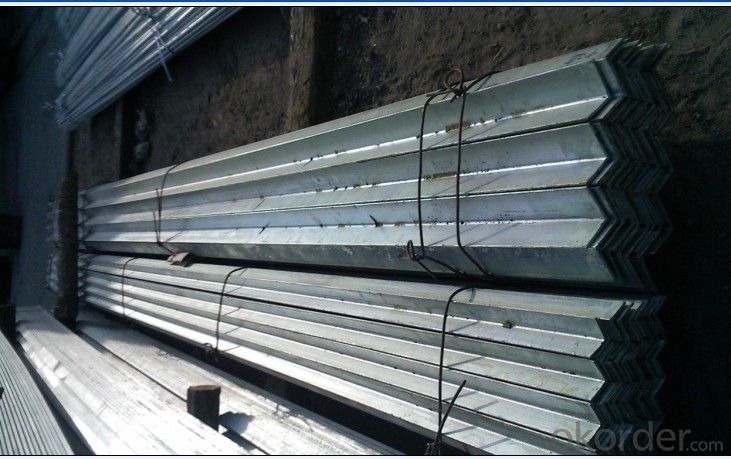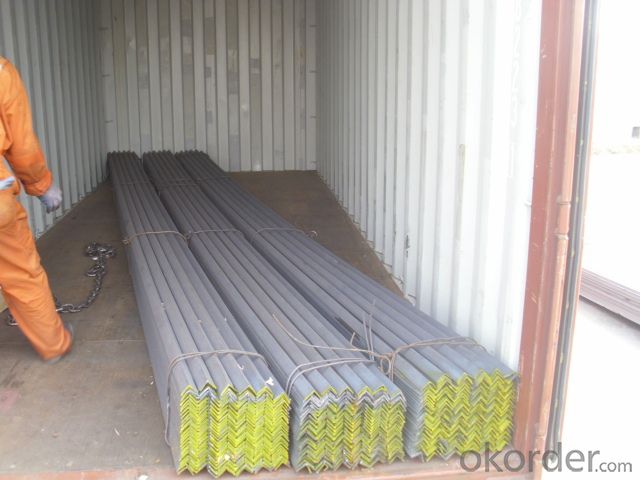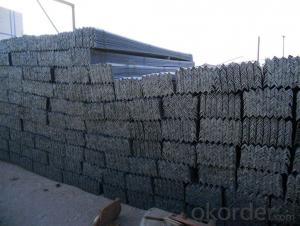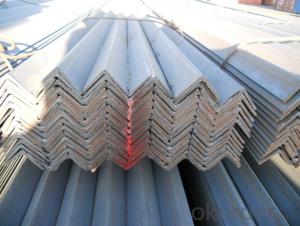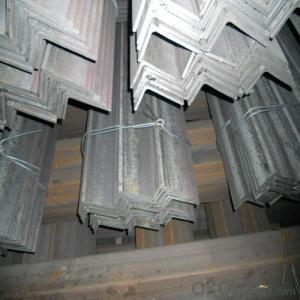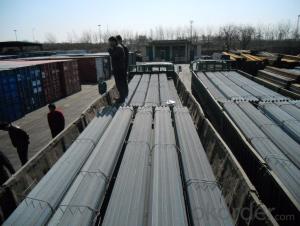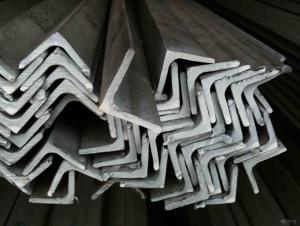Steel Equal Angle Small Size
- Loading Port:
- China Main Port
- Payment Terms:
- TT or LC
- Min Order Qty:
- -
- Supply Capability:
- -
OKorder Service Pledge
OKorder Financial Service
You Might Also Like
Product Description:
OKorder is offering Angle Bar at great prices with worldwide shipping. Our supplier is a world-class manufacturer of steel, with our products utilized the world over. OKorder annually supplies products to European, North American and Asian markets. We provide quotations within 24 hours of receiving an inquiry and guarantee competitive prices.
Product Applications:
According to the needs of different structures, Angle can compose to different force support component, and also can be the connections between components. It is widely used in various building structures and engineering structures such as roof beams, bridges, transmission towers, hoisting machinery and transport machinery, ships, industrial furnaces, reaction tower, container frame and warehouse etc.
.
Product Advantages:
OKorder's Angle Bar are durable, strong, and resist corrosion.
Main Product Features:
· Premium quality
· Prompt delivery & seaworthy packing (30 days after receiving deposit)
· Corrosion resistance
· Can be recycled and reused
· Mill test certification
· Professional Service
· Competitive pricing
Product Specifications:
1. Invoicing on theoretical weight or actual weight as customer request
2. Length: 6m, 9m, 12m as following table
3. Sizes
: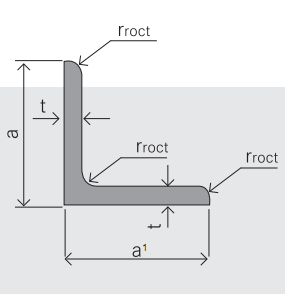
Sizes: 25mm-250mm | ||
a*t | ||
25*2.5-4.0 | 70*6.0-9.0 | 130*9.0-15 |
30*2.5-6.6 | 75*6.0-9.0 | 140*10-14 |
36*3.0-5.0 | 80*5.0-10 | 150*10-20 |
38*2.3-6.0 | 90*7.0-10 | 160*10-16 |
40*3.0-5.0 | 100*6.0-12 | 175*12-15 |
45*4.0-6.0 | 110*8.0-10 | 180*12-18 |
50*4.0-6.0 | 120*6.0-15 | 200*14-25 |
FAQ:
Q1: Why buy Materials & Equipment from OKorder.com?
A1: All products offered byOKorder.com are carefully selected from China's most reliable manufacturing enterprises. Through its ISO certifications, OKorder.com adheres to the highest standards and a commitment to supply chain safety and customer satisfaction.
Q2: How do we guarantee the quality of our products?
A2: We have established an advanced quality management system which conducts strict quality tests at every step, from raw materials to the final product. At the same time, we provide extensive follow-up service assurances as required.
Q3: What makes stainless steel stainless?
A3: Stainless steel must contain at least 10.5 % chromium. It is this element that reacts with the oxygen in the air to form a complex chrome-oxide surface layer that is invisible but strong enough to prevent further oxygen from "staining" (rusting) the surface. Higher levels of chromium and the addition of other alloying elements such as nickel and molybdenum enhance this surface layer and improve the corrosion resistance of the stainless material.
Images:
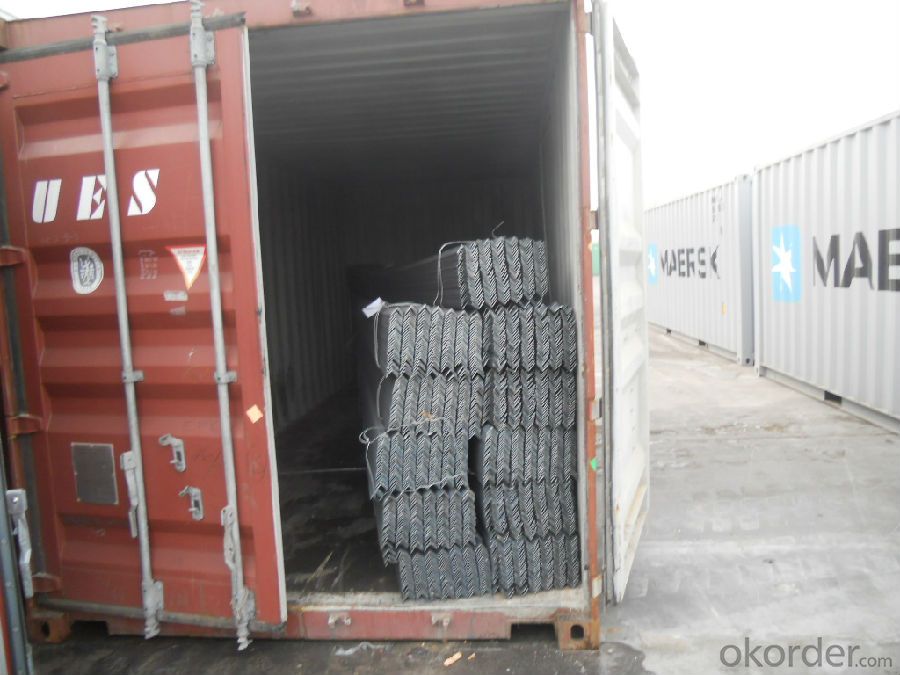
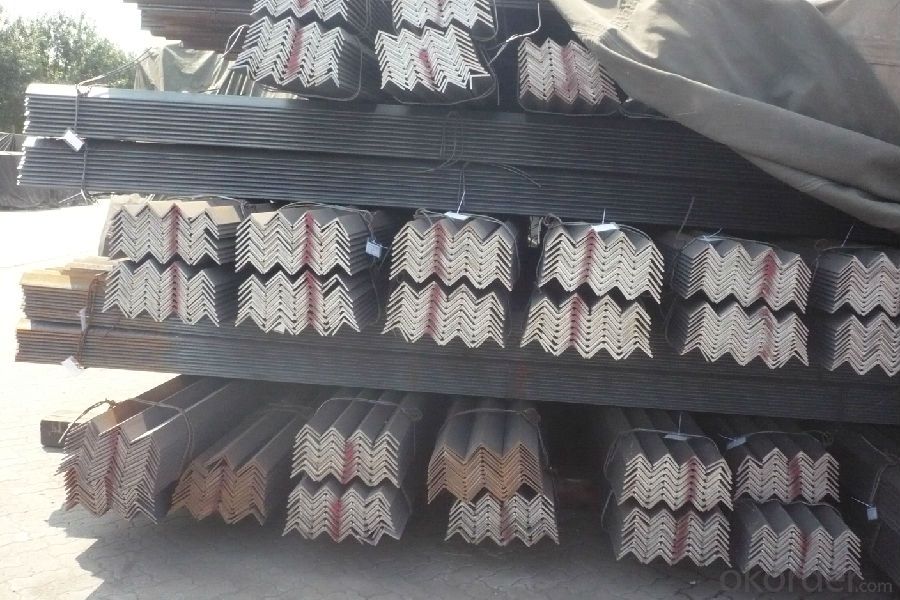
- Q: How do you determine the required size of a steel angle for a specific application?
- To determine the required size of a steel angle for a specific application, there are several factors that need to be considered. These include the load or weight that the angle will be supporting, the span or distance between supports, and the material properties of the steel angle. Firstly, it is crucial to determine the load or weight that the angle will be subjected to. This can be done by calculating the total load that will be applied to the angle, including the weight of any objects or structures that will be supported by it. It is important to account for both static and dynamic loads, as well as any potential impact or wind loads that may be present. Secondly, the span or distance between supports needs to be considered. This is the length over which the angle will be spanning and supporting the load. Longer spans typically require larger and stronger angles to ensure structural integrity. Additionally, the material properties of the steel angle play a significant role in determining its required size. Steel angles come in various grades and strengths, each with different load-bearing capacities. It is essential to consult engineering and design codes, such as the American Institute of Steel Construction (AISC) Manual, to determine the appropriate grade of steel angle that can withstand the calculated load. Once the load, span, and material properties have been determined, engineering calculations can be performed to select the required size of the steel angle. These calculations typically involve evaluating the moment, shear, and deflection of the angle under the applied load. The AISC Manual provides design tables and equations that can be used to determine the appropriate size and shape of the angle based on these calculations. In conclusion, determining the required size of a steel angle for a specific application involves considering the load, span, and material properties of the angle. By performing engineering calculations and referring to design codes, the appropriate size of the angle can be selected to ensure structural safety and integrity.
- Q: Can steel angles be used as supports for HVAC systems or ductwork?
- Yes, steel angles can be used as supports for HVAC systems or ductwork. Steel angles provide excellent strength and durability, making them ideal for supporting the weight of HVAC systems and ductwork. They can easily be mounted to walls or ceilings to provide a stable and secure support structure.
- Q: Can steel angles be used in framing?
- Yes, steel angles can be used in framing. Steel angles are commonly used in construction for framing purposes due to their strength, durability, and versatility. They are often used to provide structural support and stability in various building applications, including framing walls, floors, roofs, and other structural elements.
- Q: Are there any limitations or restrictions on the use of steel angles in certain applications?
- Yes, there are limitations and restrictions on the use of steel angles in certain applications. One limitation is the maximum load-bearing capacity of the steel angles. Depending on the size, thickness, and quality of the steel angles, they may have a limited ability to support heavy loads. Therefore, in applications where high strength and load-bearing capacity are required, alternative structural members such as steel beams or columns may be more suitable. Another restriction is the suitability of steel angles for specific shapes or configurations. Steel angles are typically L-shaped, and while they are versatile and commonly used in various applications, they may not be ideal for certain complex or curved designs. In such cases, custom-shaped structural members or other materials may be more appropriate. Additionally, the corrosion resistance of steel angles is a limitation in certain environments. Steel is susceptible to rust and corrosion, particularly in marine or highly humid conditions. In applications where exposure to moisture or corrosive substances is inevitable, additional protective measures such as coatings or stainless steel angles may be required. Lastly, the fabrication and installation of steel angles may also impose limitations. Steel angles often require welding, cutting, or drilling during fabrication, which can be challenging in certain applications where precision and specialized equipment are necessary. Moreover, the size and weight of steel angles may pose limitations during transportation and installation, especially in confined spaces or areas with limited access. Therefore, it is crucial to consider these limitations and restrictions when selecting steel angles for specific applications, ensuring that they meet the required strength, shape, corrosion resistance, and installation requirements.
- Q: How are steel angles measured?
- Steel angles are measured using two main dimensions: the length of each leg and the thickness of the material. The length of each leg refers to the distance from the intersection point of the two legs to the end of each leg. This measurement is usually expressed in inches or millimeters. The thickness of the material, also known as the gauge, is the measurement of the width of the steel angle. It is typically expressed in fractions of an inch or in millimeters. To provide a comprehensive measurement, steel angles are often described using a combination of these two dimensions. For example, a common specification could be "2 x 2 x 1/4," indicating that the steel angle has legs measuring 2 inches in length, a thickness of 1/4 inch, and both legs are equal in length. It is important to note that steel angles can be measured differently depending on the specific industry or region. Some industries may use metric measurements, while others may use imperial measurements. Therefore, it is always advisable to verify the measuring standards used in a particular context to ensure accurate understanding and communication.
- Q: What are the standard tolerances for steel angles?
- The standard tolerances for steel angles can vary depending on the specific grade and size of the angle. However, in general, the standard tolerances for steel angles include dimensional tolerances and straightness tolerances. Dimensional tolerances refer to the allowable variations in the dimensions of the steel angle, such as the thickness, width, and length. These tolerances are typically expressed as a range or a maximum allowable deviation from the specified dimensions. Straightness tolerances, on the other hand, refer to the allowable deviation from a straight line that the steel angle can have. This is typically measured by placing a straight edge along the length of the angle and measuring the maximum gap between the straight edge and the angle. It is important to note that the specific tolerances for steel angles should be determined based on the applicable standards and specifications, such as those provided by industry organizations or regulatory bodies. These standards and specifications will provide the necessary guidance on the acceptable tolerances for steel angles based on their intended use and application.
- Q: Do steel angles come with any warranties?
- Yes, steel angles typically come with warranties. The specific warranty terms may vary depending on the manufacturer or supplier. However, most reputable companies offer warranties to ensure the quality and performance of their steel angles. These warranties typically cover defects in materials or workmanship and may range from a few months to several years. It is advisable to check the warranty terms and conditions provided by the manufacturer or supplier before purchasing steel angles to understand the extent and duration of the warranty coverage.
- Q: Are steel angles resistant to high winds?
- Yes, steel angles are generally resistant to high winds due to their robust structure and strength. They are commonly used in construction and engineering projects to provide stability and support against strong winds.
- Q: What are the safety considerations when working with steel angles?
- When working with steel angles, there are several important safety considerations to keep in mind. 1. Personal Protective Equipment (PPE): Always wear the appropriate PPE, including safety glasses, gloves, and steel-toed boots, to protect yourself from potential hazards such as flying debris, sharp edges, or heavy objects falling. 2. Lifting and handling: Steel angles can be heavy and cumbersome, so it is crucial to use proper lifting techniques and equipment to avoid strains or injuries. Use lifting aids such as cranes, hoists, or forklifts when necessary, and never attempt to lift or carry steel angles alone if they exceed a safe weight limit. 3. Sharp edges and burrs: Steel angles often have sharp edges and burrs that can cause cuts or abrasions. Use caution when handling them and consider deburring or filing down any sharp edges to reduce the risk of injuries. 4. Secure and stable work area: Ensure that the work area is clean, organized, and free from any tripping hazards. Steel angles should be stored securely to prevent them from falling or rolling onto workers or equipment. 5. Welding and cutting: If welding or cutting steel angles, be aware of the potential hazards associated with these processes. Use adequate ventilation or respirators to protect against fumes and ensure that the work area is clear of flammable materials. Follow proper safety protocols and use appropriate welding or cutting equipment to minimize the risk of fire, burns, or electric shocks. 6. Structural stability: When steel angles are used as part of a larger structure, it is crucial to ensure that the design and construction adhere to industry standards and codes. This includes properly securing the angles, verifying load capacities, and conducting regular inspections to identify any signs of structural weaknesses or defects. 7. Training and supervision: Workers should receive proper training on the safe handling, storage, and use of steel angles. Supervisors should actively monitor the work area and provide guidance to ensure that safety protocols are followed at all times. By following these safety considerations, individuals can reduce the risk of accidents and injuries when working with steel angles.
- Q: Can steel angles be used in overhead crane or hoist systems?
- Indeed, overhead crane or hoist systems can indeed utilize steel angles. These structural components find widespread application in the construction of crane runways, support structures, and trolley rails. By furnishing a robust and inflexible framework for the crane or hoist system, steel angles prove their worth. Notably, their superior strength-to-weight ratio renders them an optimal selection for heavy-duty tasks. Furthermore, the convenience of welding or bolting steel angles together facilitates effortless installation and customization. All in all, steel angles offer a dependable and economically viable choice for integration into overhead crane or hoist systems.
Send your message to us
Steel Equal Angle Small Size
- Loading Port:
- China Main Port
- Payment Terms:
- TT or LC
- Min Order Qty:
- -
- Supply Capability:
- -
OKorder Service Pledge
OKorder Financial Service
Similar products
Hot products
Hot Searches
Related keywords
